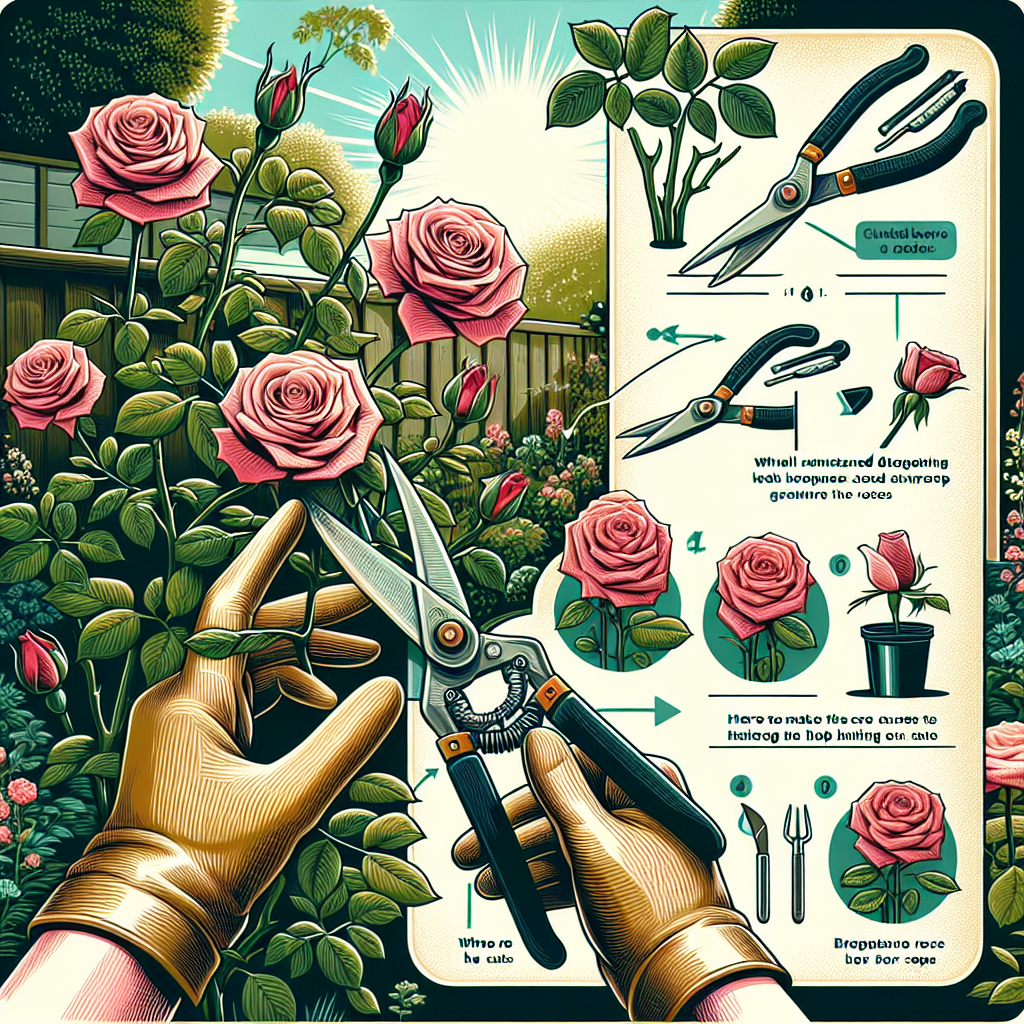
How to cut back roses
Understanding the Basics of Rose Pruning
Roses are renowned for their stunning beauty and captivating fragrance, but to ensure they flourish in your garden, regular maintenance is crucial. One of the key aspects of rose care is pruning, specifically learning how to cut back roses effectively. Cutting back roses not only promotes healthy growth but also enhances flowering and maintains a tidy appearance in your garden.
Why Prune Roses?
Pruning roses serves multiple purposes that contribute to their overall health and beauty. Here are a few reasons why this task should be part of your rose care routine:
- Encourages New Growth: Pruning helps remove old and dead wood, which stimulates new growth.
- Enhances Air Circulation: Thinning out dense foliage improves airflow, reducing disease risks.
- Shapes the Bush: Regular cutting back helps maintain the desired shape and size of the rose bush.
- Improves Flowering: Cutting back encourages more blooms, leading to a vibrant display in your garden.
- Removes Diseased Wood: It is essential to cut away any infected wood to prevent the spread of disease.
When to Cut Back Roses
Timing is critical when it comes to pruning. Knowing when to cut back roses can significantly impact their growth. Here are some guidelines:
- For most climates, late winter to early spring is the ideal time, just as the buds begin to swell.
- In warmer climates, pruning can occur as early as February.
- Areas with cold winters should wait until after the last frost to avoid damaging the plant.
Signs It’s Time to Prune
Keeping an eye on your roses will help you determine when it's time to cut back. Here are some indicators that your roses may need pruning:
- Buds appear swollen, signaling the plant is ready for new growth.
- Old wood is evident with a lack of blooms in recent seasons.
- Branches are crossing each other or growing too densely.
Tools You Will Need
Before you start cutting back roses, ensure you have the right tools. This will make the process smoother and more efficient:
- Pruning Shears: Sharp, clean shears are essential for making precise cuts.
- Loppers: These are necessary for cutting thicker branches.
- Gloves: Protect your hands from thorns and dirt.
- Disinfectant: Keep your tools clean to prevent spreading diseases.
Step-by-Step Guide on How to Cut Back Roses
Now that you understand the importance of pruning and the tools required, here’s a detailed guide on how to cut back roses effectively:
- Inspect Your Roses: Before you begin, examine your plants for any dead or diseased wood.
- Remove Dead or Dying Wood: Begin by cutting back any dead or dark, shriveled branches all the way to the main stem.
- Thin Out the Center: Aim to open the center of the bush by cutting back branches that are crossing or growing towards the inside.
- Cut to an Outward-Facing Bud: When making cuts, always snip just above an outward-facing bud to encourage growth away from the center.
- Size Reduction: Depending on the size and type of rose, reduce the bush to about one-third to two-thirds of its original height.
- Clean Up: Clear away any leaves, cuttings, or debris from around the base of the plant to reduce the risk of disease.
Pruning Different Types of Roses
Different types of roses require different pruning techniques. Here’s a brief overview:
| Type of Rose | Pruning Technique |
|---|---|
| Hybrid Tea Roses | Cut back to 3-5 buds on each stem, removing any wood that is thinner than a pencil. |
| Floribunda Roses | Prune to 3-5 buds above the ground, removing dead or weak stems. |
| Climbing Roses | Once-blooming types should only be pruned after flowering; summer-blooming varieties can be cut back in early spring. |
| David Austin Roses | Lightly prune all wood to maintain a rounded shape. |
After Pruning Care
After you have pruned your roses, it is essential to provide the proper aftercare to promote healthy growth:
- Water Well: Ensure your roses receive adequate moisture after pruning.
- Add Mulch: Applying mulch helps conserve moisture and suppress weeds.
- Fertilize: Use a balanced rose fertilizer to give your plants the nutrients they need.
Common Mistakes to Avoid
While pruning can significantly benefit your roses, there are common mistakes that can hinder growth:
- Pruning Too Late: Cutting back roses after they have started to leaf out can stress the plant.
- Using Dull Tools: Dull tools can crush stems rather than creating clean cuts.
- Over-Pruning: Cutting back too much can weaken the plant, making it susceptible to disease.
- Ignoring Pest Management: Always inspect for pests during pruning to ensure early intervention.
Conclusion
Learning how to cut back roses is an invaluable skill for any garden enthusiast. By understanding the basics of pruning, knowing when and how to perform it, and providing proper aftercare, you can enjoy a vibrant and healthy rose garden. Each season offers a different opportunity for renewal, and with the right techniques, your roses can blossom beautifully for years to come. Happy gardening!
``` This article covers all necessary aspects of cutting back roses, providing clear guidance while integrating the given keyword appropriately.By Guest, Published on August 15th, 2024